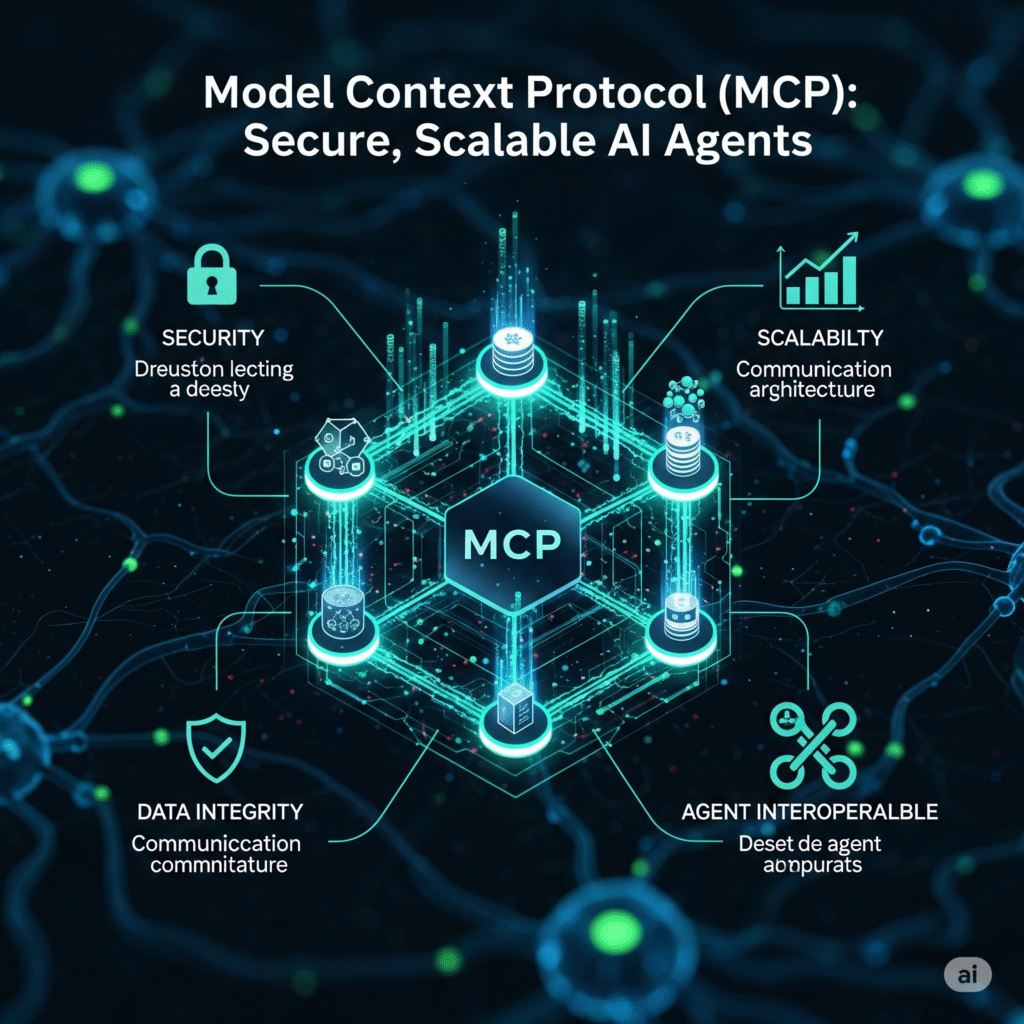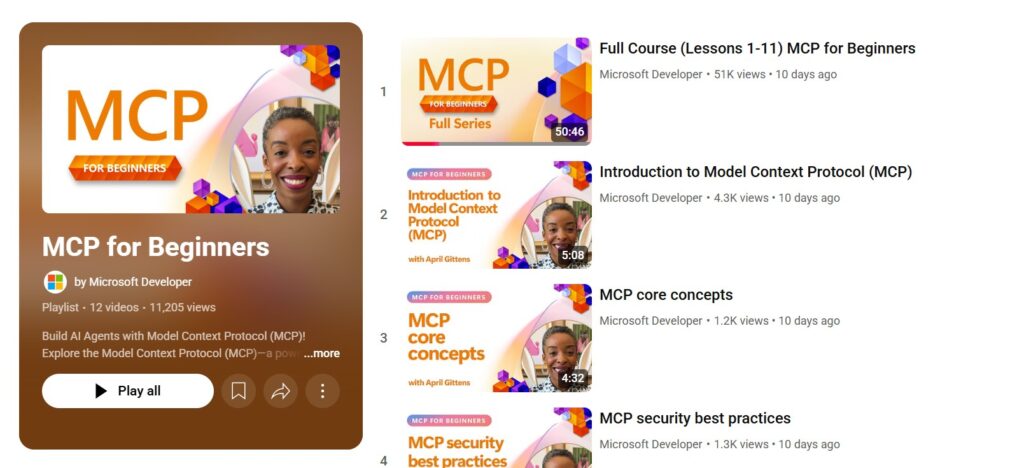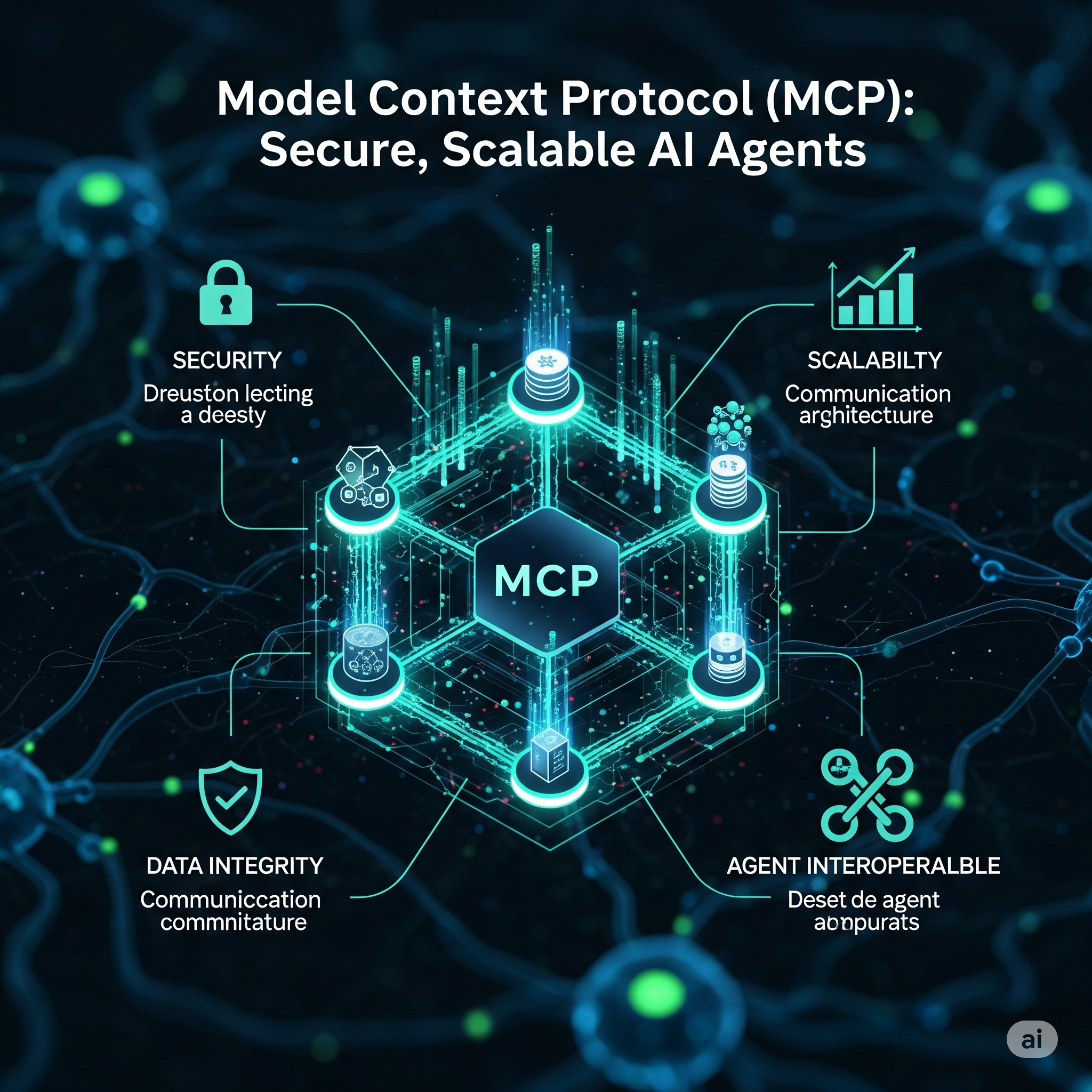As artificial intelligence systems become increasingly complex and interconnected, the need for secure, scalable, and interoperable frameworks has never been greater. Traditional approaches to AI often result in isolated models that are difficult to scale, integrate, or maintain. To address this challenge, Microsoft Developer has introduced a powerful framework known as Model Context Protocol (MCP).

MCP provides a standardized way for AI models, tools, and agents to communicate and collaborate in a shared context. Whether you are a machine learning engineer, software developer, or AI enthusiast, this beginner-friendly protocol can drastically improve how you build intelligent, composable systems.
In this guide, we’ll explore:
- What MCP is and how it works
- Why MCP matters in modern AI workflows
- What’s included in Microsoft’s free 11-part video series
- Real-world applications of MCP
- How you can get started with MCP today
Table of Contents
What is Model Context Protocol (MCP)?
Model Context Protocol (MCP) is a specification designed to enable modular, context-aware, and interoperable AI agents. It defines how different AI models, tools, and agents interact by sharing memory, capabilities, and execution environments through a common context.
At its core, MCP introduces structured components such as:
- Context: A shared workspace for agents and tools to exchange information.
- Capabilities: Defined functions or tools an agent is allowed to use.
- Memory: Persistent or ephemeral storage that agents can read from or write to.
- Sandboxing: Isolation of tasks or agents to ensure safe execution.
- Protocol Messages: Structured formats that agents use to communicate.
MCP abstracts away the complexities of agent coordination and enables developers to focus on building intelligent workflows that scale with minimal friction.
Why MCP Matters in AI Development
As organizations adopt AI at scale, they face several challenges: managing multiple models, orchestrating tools, handling sensitive data securely, and ensuring that systems remain modular and maintainable.
MCP addresses these challenges through a few key advantages:
1. Standardization
MCP offers a consistent way to define how agents and tools interact. This eliminates the need for ad-hoc glue code and custom APIs, enabling faster integration and reduced development time.
2. Scalability
MCP is designed with composability in mind. You can start with a single agent and incrementally add others as your system evolves. The protocol ensures that new agents can plug into existing pipelines without rewriting core logic.
3. Security
Security is foundational to MCP. It includes sandboxing, scoped capabilities, and controlled memory access. These mechanisms prevent unintended behavior, data leaks, or unauthorized access, making MCP suitable for enterprise-grade applications.
4. Interoperability
Because MCP defines clear boundaries and communication methods, agents built by different teams, or even different organizations, can operate together within a shared context. This unlocks powerful collaboration possibilities.
Inside the Microsoft Developer Video Series on MCP
Microsoft Developer has launched a comprehensive, free video series covering MCP from the ground up. This 11-part series is perfect for beginners and professionals alike. Each video is concise, practical, and designed to help you start building with MCP quickly.
Here’s an overview of what the series covers:
Lesson 1: Introduction to MCP
An overview of the protocol’s purpose, how it solves key AI system challenges, and why Microsoft is investing in it.
Lesson 2: Core Concepts
A detailed breakdown of the protocol’s foundational elements, such as context sharing, agent capabilities, and structured tool use.
Lesson 3–5: Real-World Use Cases
Demonstrates how to build agents that work with documents, perform research, or interact with APIs using context-aware design patterns.
Lesson 6: Security Best Practices
Guidance on implementing sandboxing, limiting agent access, and avoiding unsafe operations or privilege escalation.
Lesson 7–9: Tooling and Deployment
How to use Visual Studio Code, the AI Toolkit, and local or cloud environments to build and run your own MCP-compatible agents.
Lesson 10: Multi-Agent Collaboration
How to link multiple agents into a seamless workflow that shares memory and responsibilities effectively.
Lesson 11: Open Source Contributions
Instructions on how to contribute to the MCP specification, tooling, or sample agents via GitHub.
You can watch the full series here:
MCP

Real-World Applications of MCP
The Model Context Protocol is not just theoretical, it is being used to power a wide range of real-world AI applications. Here are a few practical use cases where MCP shines:
AI-Powered Developer Tools
Build agents that can read code, suggest fixes, or generate documentation by combining static analysis tools with LLMs, all within a shared MCP context.
Document Intelligence Pipelines
Use MCP to create workflows where one agent extracts data from PDFs, another summarizes key points, and a third exports the information to a database.
Customer Service Automation
Build an AI assistant composed of multiple agents—one that retrieves customer data, one that handles queries, and one that triggers workflows in CRM tools.
Secure Data Processing
In industries like healthcare or finance, MCP ensures that sensitive data is accessed only by authorized agents in secure sandboxes, meeting compliance requirements.
How to Get Started with MCP
Ready to start building with Model Context Protocol? Here’s what you need to do:
- Explore the GitHub Repository
Microsoft has open-sourced the entire MCP codebase, including example agents, the protocol spec, and dev tools. Link: Github - Install the AI Toolkit for Visual Studio Code
The toolkit makes it easy to write, run, and test MCP-compatible agents inside your IDE. - Follow the Video Series
Walk through all 11 lessons for a structured, hands-on introduction to building real-world MCP systems. - Join the Open Source Community
Contribute to the protocol, suggest new capabilities, or build your own reusable agents.
Conclusion
Model Context Protocol represents the next evolution in building AI systems that are secure, flexible, and production-ready. As developers shift from standalone LLM prompts to agent-based architectures, MCP provides the structure and tooling needed to do this at scale.
Microsoft’s comprehensive, open-source learning resources make it easy for anyone regardless of background to get started. If you’re serious about building intelligent, context-aware agents that integrate with real tools and systems, MCP is a technology worth learning today.
For developers, ML engineers, and AI builders, the future is modular, composable, and context-driven and MCP is paving the way.
Related Reads
Learn AI Engineering: Free Resources to Master AI, Machine Learning, LLMs and AI Agents


1 thought on “Mastering Model Context Protocol (MCP): Build Secure, Scalable AI Agents with Microsoft’s Developer Series”